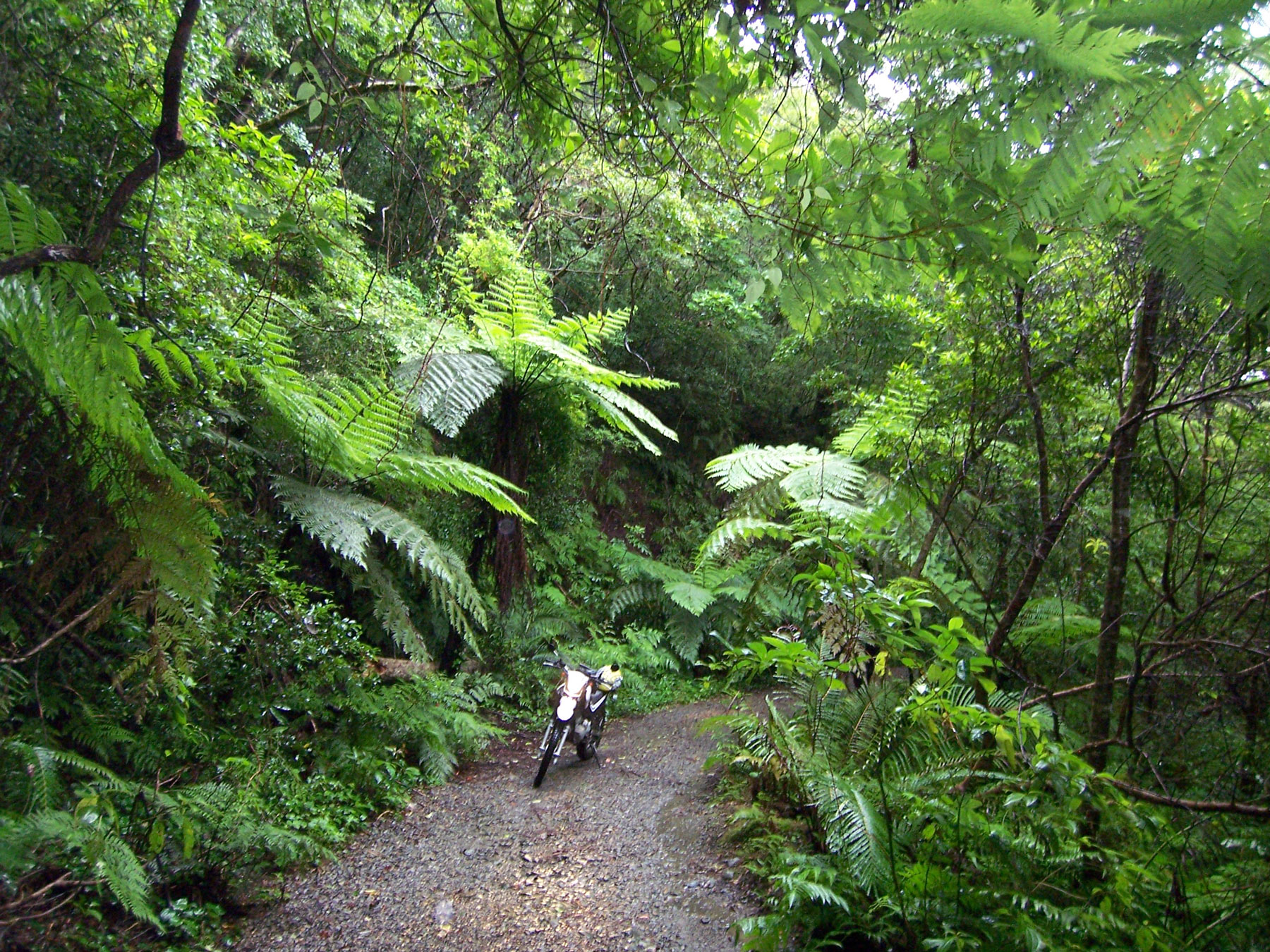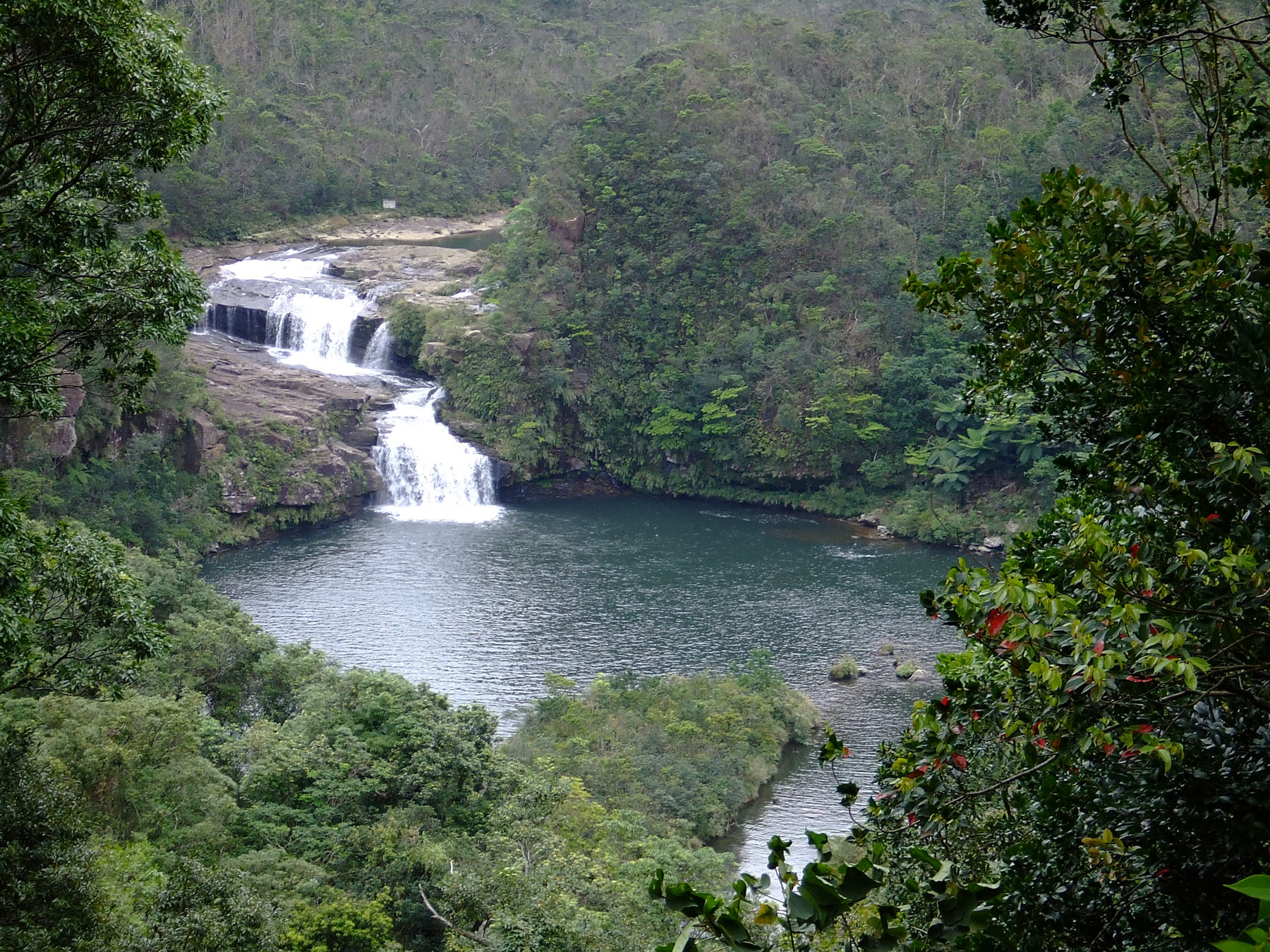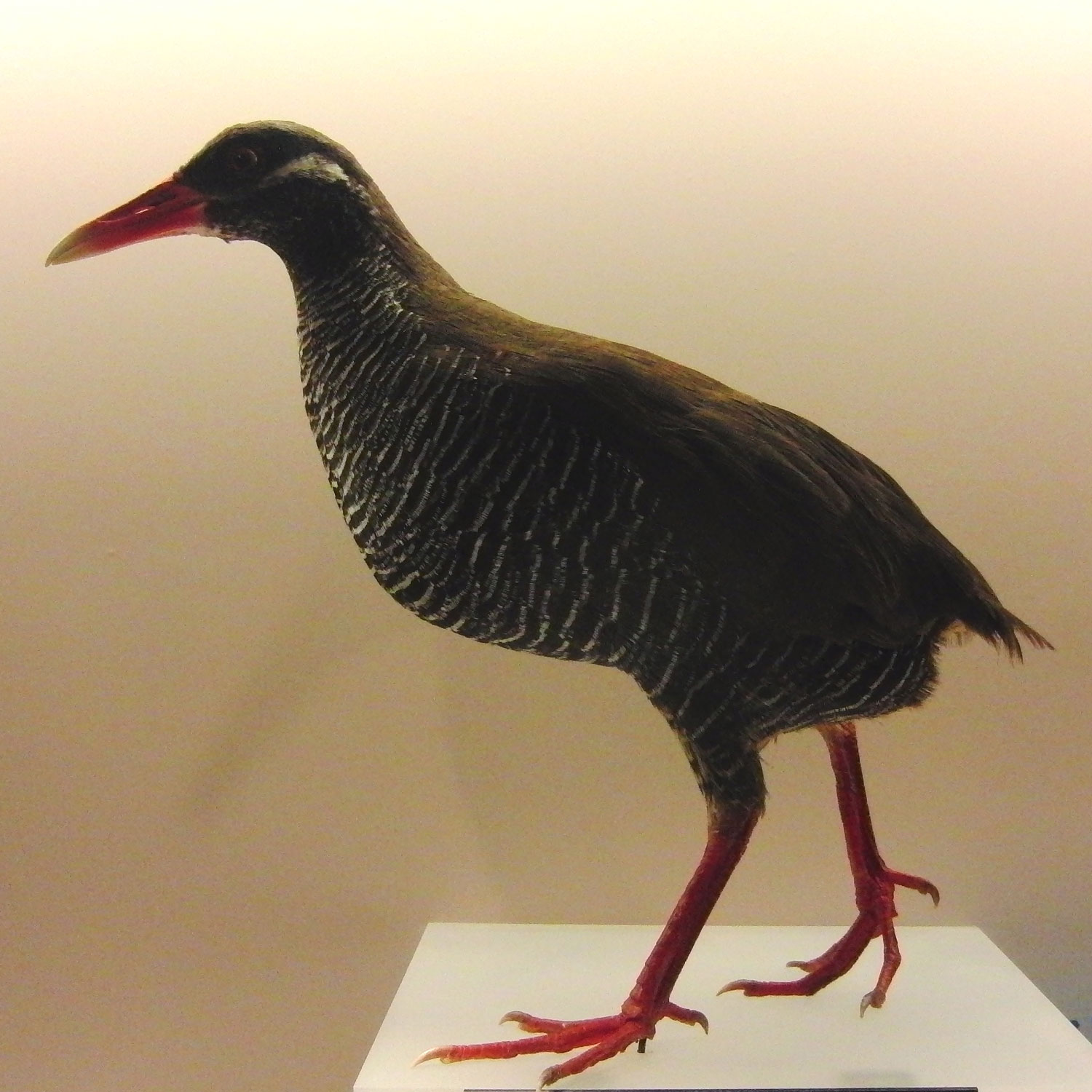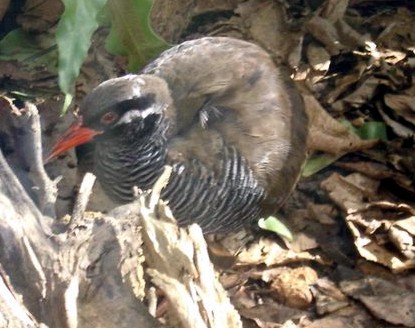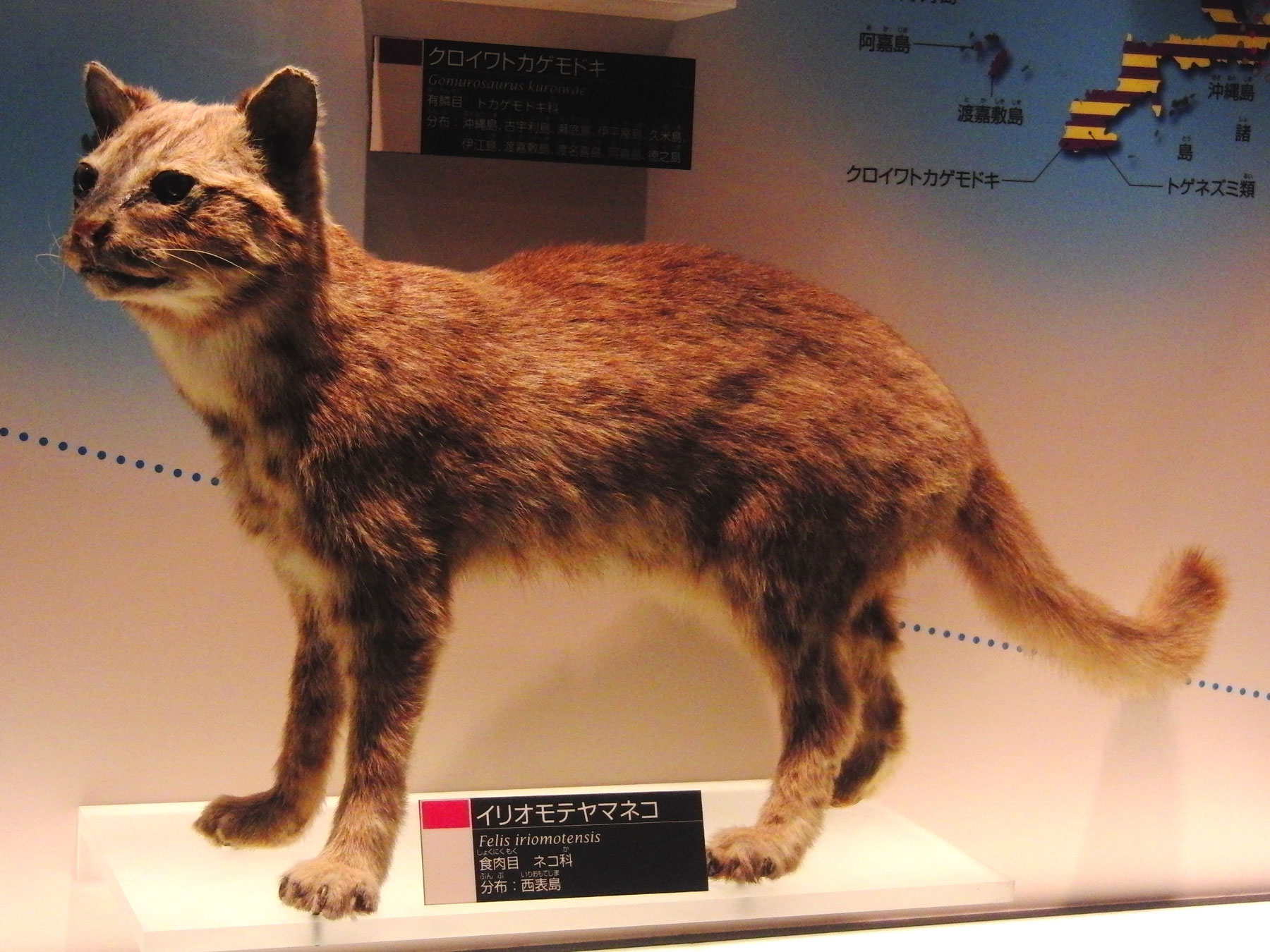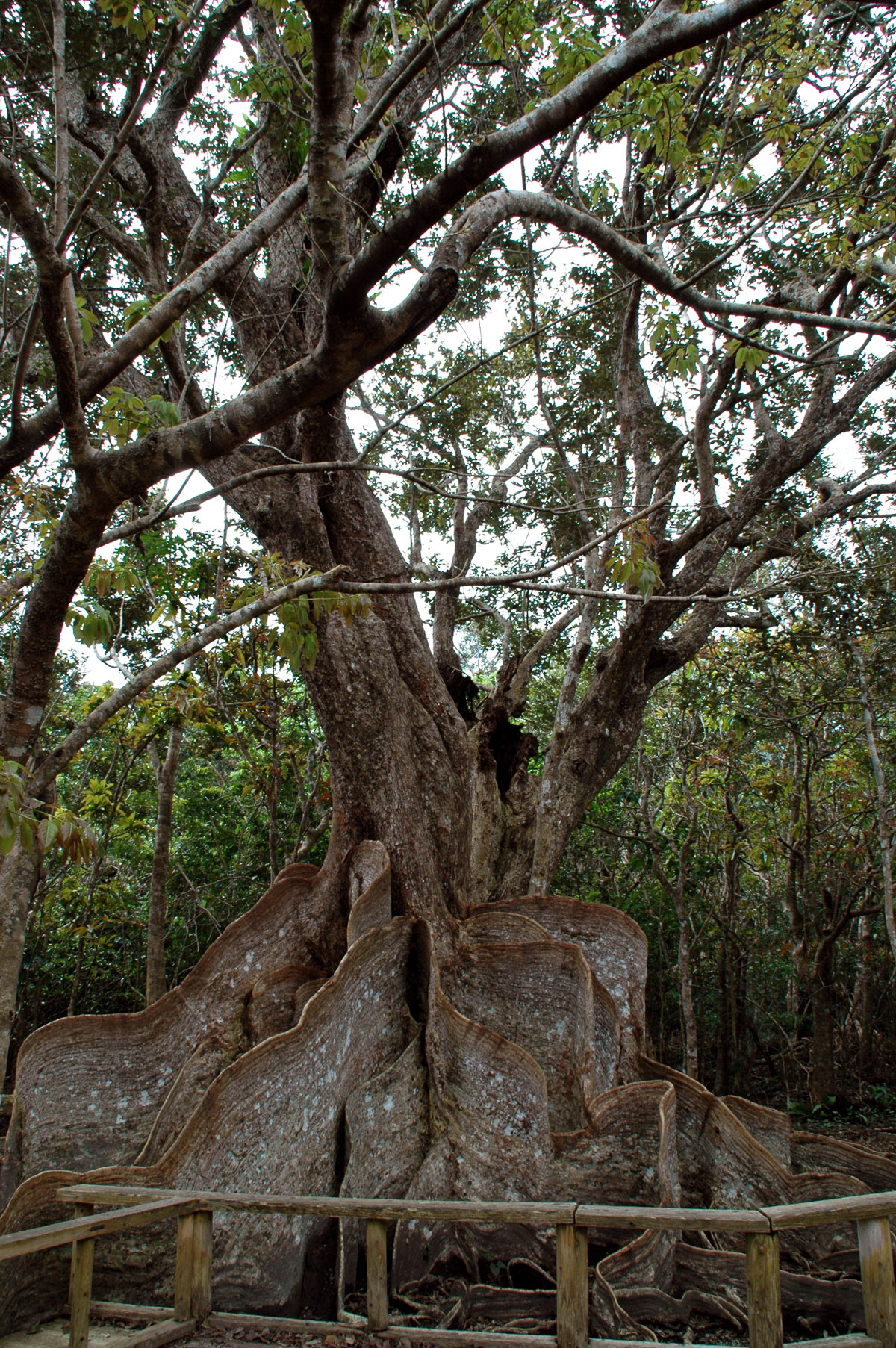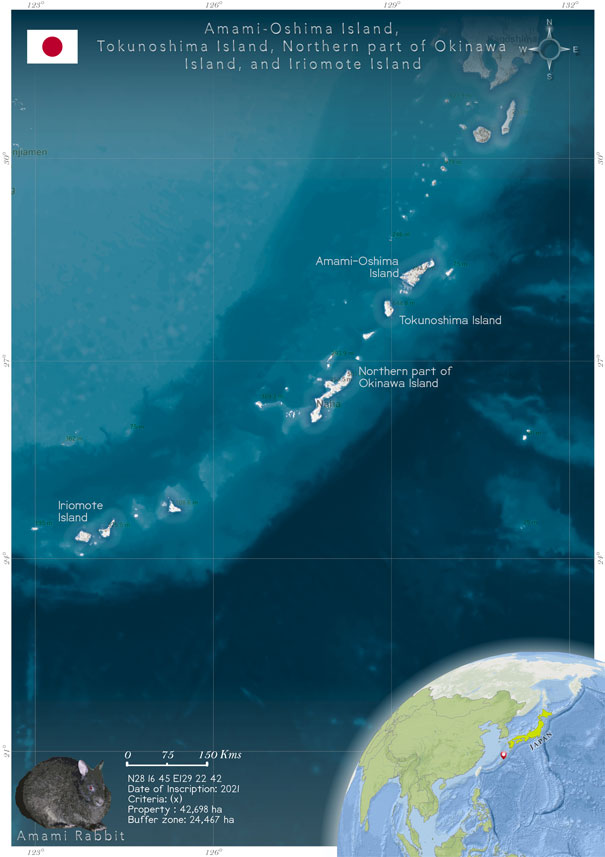
Amami-Oshima Island, Tokunoshima Island, Northern part of Okinawa Island, and Iriomote Island (1574)
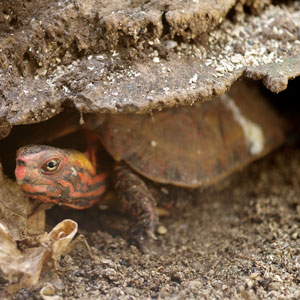 Covering 42,698 hectares across four islands in the southwest of Japan, this site boasts subtropical rainforests along the border of the East China Sea and the Philippine Sea. The highest peak, Mount Yuwandake on Amami-Oshima Island, rises 694 meters above sea level. Remarkably devoid of human residence, the area hosts remarkable biodiversity, featuring numerous species exclusive to the region and facing significant global endangerment. Notable inhabitants include the endangered Amami Rabbit and Ryukyu Long-haired Rat, representing ancient lineages without counterparts elsewhere. The site also encompasses five mammal species, three bird species, and three amphibian species classified as Evolutionarily Distinct and Globally Endangered (EDGE). Additionally, each island within the site supports distinct endemic species found only in those specific locations. Preserving this site is pivotal to safeguarding these exceptional and at-risk ecosystems.
Covering 42,698 hectares across four islands in the southwest of Japan, this site boasts subtropical rainforests along the border of the East China Sea and the Philippine Sea. The highest peak, Mount Yuwandake on Amami-Oshima Island, rises 694 meters above sea level. Remarkably devoid of human residence, the area hosts remarkable biodiversity, featuring numerous species exclusive to the region and facing significant global endangerment. Notable inhabitants include the endangered Amami Rabbit and Ryukyu Long-haired Rat, representing ancient lineages without counterparts elsewhere. The site also encompasses five mammal species, three bird species, and three amphibian species classified as Evolutionarily Distinct and Globally Endangered (EDGE). Additionally, each island within the site supports distinct endemic species found only in those specific locations. Preserving this site is pivotal to safeguarding these exceptional and at-risk ecosystems.
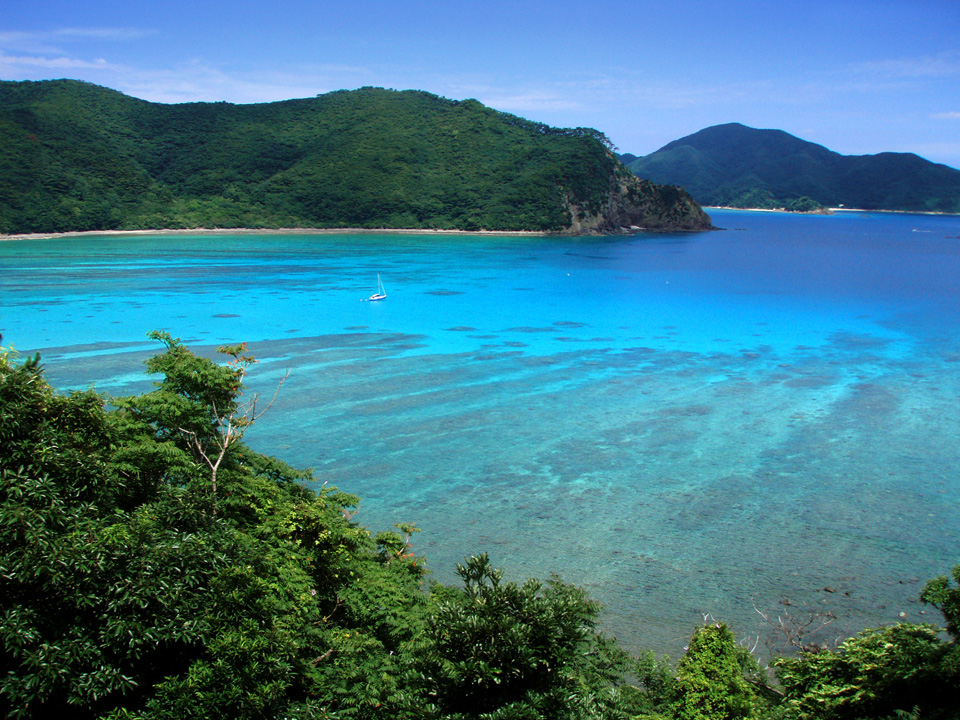 The property spans four islands within the Japanese archipelago: Amami-Oshima Island, Tokunoshima Island, Okinawa Island, and Island. AmamiOshima Island, located south-southwest of Yakushima Island, boasts an undulating landscape characterized by convoluted valleys and eroded low-relief surfaces. In contrast, Tokunoshima Island, positioned southwest of Amami-Oshima Island, features a mountainous central-north area and gentle slopes in the southwest. The nominated region of Tokunoshima Island mainly pertains to its central-north mountains, composed predominantly of Cretaceous accretionary complex and plutonic rocks.
Okinawa Island, the largest in the Ryukyu Chain, stretches from north to south and showcases various geographical elements, including mountains, marine terraces, and limestone blocks. Notably, cone karst formations are prominent in certain areas. The nominated area on Okinawa Island encompasses the mountainous terrain within three Yambaru villages, characterized by undulating landforms and intricate valleys. This area reaches altitudes of up to 503 meters and primarily comprises Mesozoic to Eocene accretionary complex bedrocks. Moving southwest to Iriomote Island, the landscape shifts to a low relief surface shaped by river-eroded mountains and gutter-shaped valleys. These valleys create a thriving environment for mangrove forests near river mouths. The nominated property includes most of Iriomote Island's mountains, which feature Miocene sedimentary rocks, coal seams, and sandy limestone. One can find Triassic to Jurassic metamorphic rocks in the northeastern part of the island, while Pleistocene sedimentary rocks form terraces in the northsoutheastern region.
The property encapsulates four distinct islands, each contributing its unique geological narrative to the broader Japanese archipelago. These islands encompass a variety of geological formations, ranging from Cretaceous accretionary complex and plutonic rocks to Miocene sedimentary rocks and coal seams. This geological diversity underlines the complexity and evolution of the Japanese archipelago's landscape. Spanning Amami-Oshima Island, Tokunoshima Island, the northern part of Okinawa Island, and Iriomote Island, the terrestrial serial property encompasses a vast area of 42,698 hectares. This property is distinguished by its division into five distinct components distributed across these islands, including two on Tokunoshima Island. The Kuroshio Current and a subtropical high-pressure system significantly influence the region's climate, resulting in a warm and humid subtropical climate that predominantly supports evergreen broadleaved subtropical rainforests. The region's geological history took a pivotal turn during the late Miocene era with the emergence of the Okinawa Trough, which led to the separation of a chain of islands from the Eurasian Continent. This geological transformation created isolated habitats that facilitated the evolution of unique and diverse biota.
The nominated property is an integral part of the broader Ryukyu Chain, consisting of more than 900 islands of varying sizes that span approximately 1,200 km between mainland Kyushu and Taiwan. This chain includes four main islands: Amami-Oshima Island and Tokunoshima Island within the Amami Island Group, Okinawa Island in the Okinawa Island Group, and Iriomote Island in the Sakishima Island Group. Although the World Geographical Scheme for Recording Plant Distributions may use the term Nansei-shoto for the area, this label only partially encompasses the Ryukyu Chain. The Nansei-shoto designation excludes islands like the Daito Islands, which have distinct formation processes. The nomenclature used in this document aligns with scientific paper classifications, referring to the region as the "Ryukyu Chain." Positioned at the junction of the Eurasian Plate and the Philippine Sea Plate, the formation of the Ryukyu Chain was influenced by tectonic deformation resulting from the subduction of the Philippine Sea Plate beneath the Eurasian Plate within the Ryukyu Trench. This geological setting has given rise to distinct features, including the Ryukyu Trench, outer and inner arc swells, the Okinawa Trough, and the continental shelf. The nominated property is situated on islands formed within the Ryukyu nonvolcanic outer arc. Geographically, the Ryukyu Chain can be categorized into three areas-North Ryukyus, Central Ryukyus, and South Ryukyus-based on a combination of geological, geomorphological, and biogeographical factors.
The property spans four islands within the Japanese archipelago: Amami-Oshima Island, Tokunoshima Island, Okinawa Island, and Island. AmamiOshima Island, located south-southwest of Yakushima Island, boasts an undulating landscape characterized by convoluted valleys and eroded low-relief surfaces. In contrast, Tokunoshima Island, positioned southwest of Amami-Oshima Island, features a mountainous central-north area and gentle slopes in the southwest. The nominated region of Tokunoshima Island mainly pertains to its central-north mountains, composed predominantly of Cretaceous accretionary complex and plutonic rocks.
Okinawa Island, the largest in the Ryukyu Chain, stretches from north to south and showcases various geographical elements, including mountains, marine terraces, and limestone blocks. Notably, cone karst formations are prominent in certain areas. The nominated area on Okinawa Island encompasses the mountainous terrain within three Yambaru villages, characterized by undulating landforms and intricate valleys. This area reaches altitudes of up to 503 meters and primarily comprises Mesozoic to Eocene accretionary complex bedrocks. Moving southwest to Iriomote Island, the landscape shifts to a low relief surface shaped by river-eroded mountains and gutter-shaped valleys. These valleys create a thriving environment for mangrove forests near river mouths. The nominated property includes most of Iriomote Island's mountains, which feature Miocene sedimentary rocks, coal seams, and sandy limestone. One can find Triassic to Jurassic metamorphic rocks in the northeastern part of the island, while Pleistocene sedimentary rocks form terraces in the northsoutheastern region.
The property encapsulates four distinct islands, each contributing its unique geological narrative to the broader Japanese archipelago. These islands encompass a variety of geological formations, ranging from Cretaceous accretionary complex and plutonic rocks to Miocene sedimentary rocks and coal seams. This geological diversity underlines the complexity and evolution of the Japanese archipelago's landscape. Spanning Amami-Oshima Island, Tokunoshima Island, the northern part of Okinawa Island, and Iriomote Island, the terrestrial serial property encompasses a vast area of 42,698 hectares. This property is distinguished by its division into five distinct components distributed across these islands, including two on Tokunoshima Island. The Kuroshio Current and a subtropical high-pressure system significantly influence the region's climate, resulting in a warm and humid subtropical climate that predominantly supports evergreen broadleaved subtropical rainforests. The region's geological history took a pivotal turn during the late Miocene era with the emergence of the Okinawa Trough, which led to the separation of a chain of islands from the Eurasian Continent. This geological transformation created isolated habitats that facilitated the evolution of unique and diverse biota.
The nominated property is an integral part of the broader Ryukyu Chain, consisting of more than 900 islands of varying sizes that span approximately 1,200 km between mainland Kyushu and Taiwan. This chain includes four main islands: Amami-Oshima Island and Tokunoshima Island within the Amami Island Group, Okinawa Island in the Okinawa Island Group, and Iriomote Island in the Sakishima Island Group. Although the World Geographical Scheme for Recording Plant Distributions may use the term Nansei-shoto for the area, this label only partially encompasses the Ryukyu Chain. The Nansei-shoto designation excludes islands like the Daito Islands, which have distinct formation processes. The nomenclature used in this document aligns with scientific paper classifications, referring to the region as the "Ryukyu Chain." Positioned at the junction of the Eurasian Plate and the Philippine Sea Plate, the formation of the Ryukyu Chain was influenced by tectonic deformation resulting from the subduction of the Philippine Sea Plate beneath the Eurasian Plate within the Ryukyu Trench. This geological setting has given rise to distinct features, including the Ryukyu Trench, outer and inner arc swells, the Okinawa Trough, and the continental shelf. The nominated property is situated on islands formed within the Ryukyu nonvolcanic outer arc. Geographically, the Ryukyu Chain can be categorized into three areas-North Ryukyus, Central Ryukyus, and South Ryukyus-based on a combination of geological, geomorphological, and biogeographical factors.
Criterion (ix)
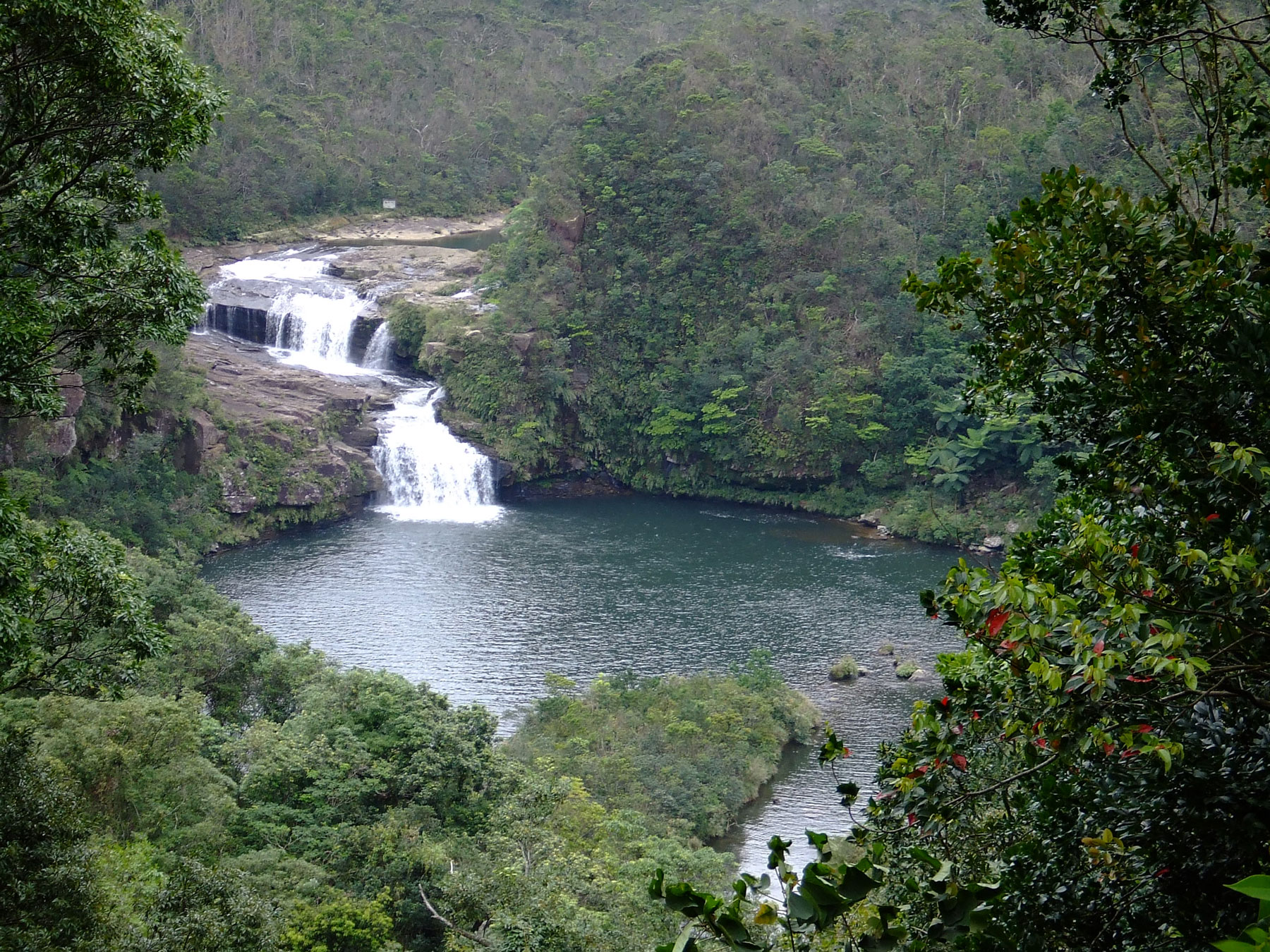 The property's ecosystems reflect a range of evolutionary processes illustrated through its rich assemblage of plant species from both a Southeast Asian and a Northeast Asian origin. There is also a very high percentage of endemic species in selected taxonomic groups, resulting from these evolutionary processes. Within the flora it is an important centre for active, ongoing speciation.
The Ogasawara Islands provide valuable evidence of evolutionary processes through their significant on-going ecological processes of adaptive radiation in the evolution of the land snail fauna as well as in their endemic plant species. The examples of fine-scale adaptive radiation between and sometimes within the different islands of the archipelago are central to the study and understanding of speciation and ecological diversification. This is further enhanced by the relatively low extinction rates in taxa such as the land snails.
It is the combination of both the concentration of endemism and extent of adaptive radiation evident in the Ogasawara Islands which sets the property apart from other places illustrating evolutionary processes. When taking into account their small area, the Ogasawara Islands show exceptionally high levels of endemism in land snails and vascular plants.
The property's ecosystems reflect a range of evolutionary processes illustrated through its rich assemblage of plant species from both a Southeast Asian and a Northeast Asian origin. There is also a very high percentage of endemic species in selected taxonomic groups, resulting from these evolutionary processes. Within the flora it is an important centre for active, ongoing speciation.
The Ogasawara Islands provide valuable evidence of evolutionary processes through their significant on-going ecological processes of adaptive radiation in the evolution of the land snail fauna as well as in their endemic plant species. The examples of fine-scale adaptive radiation between and sometimes within the different islands of the archipelago are central to the study and understanding of speciation and ecological diversification. This is further enhanced by the relatively low extinction rates in taxa such as the land snails.
It is the combination of both the concentration of endemism and extent of adaptive radiation evident in the Ogasawara Islands which sets the property apart from other places illustrating evolutionary processes. When taking into account their small area, the Ogasawara Islands show exceptionally high levels of endemism in land snails and vascular plants.
Status
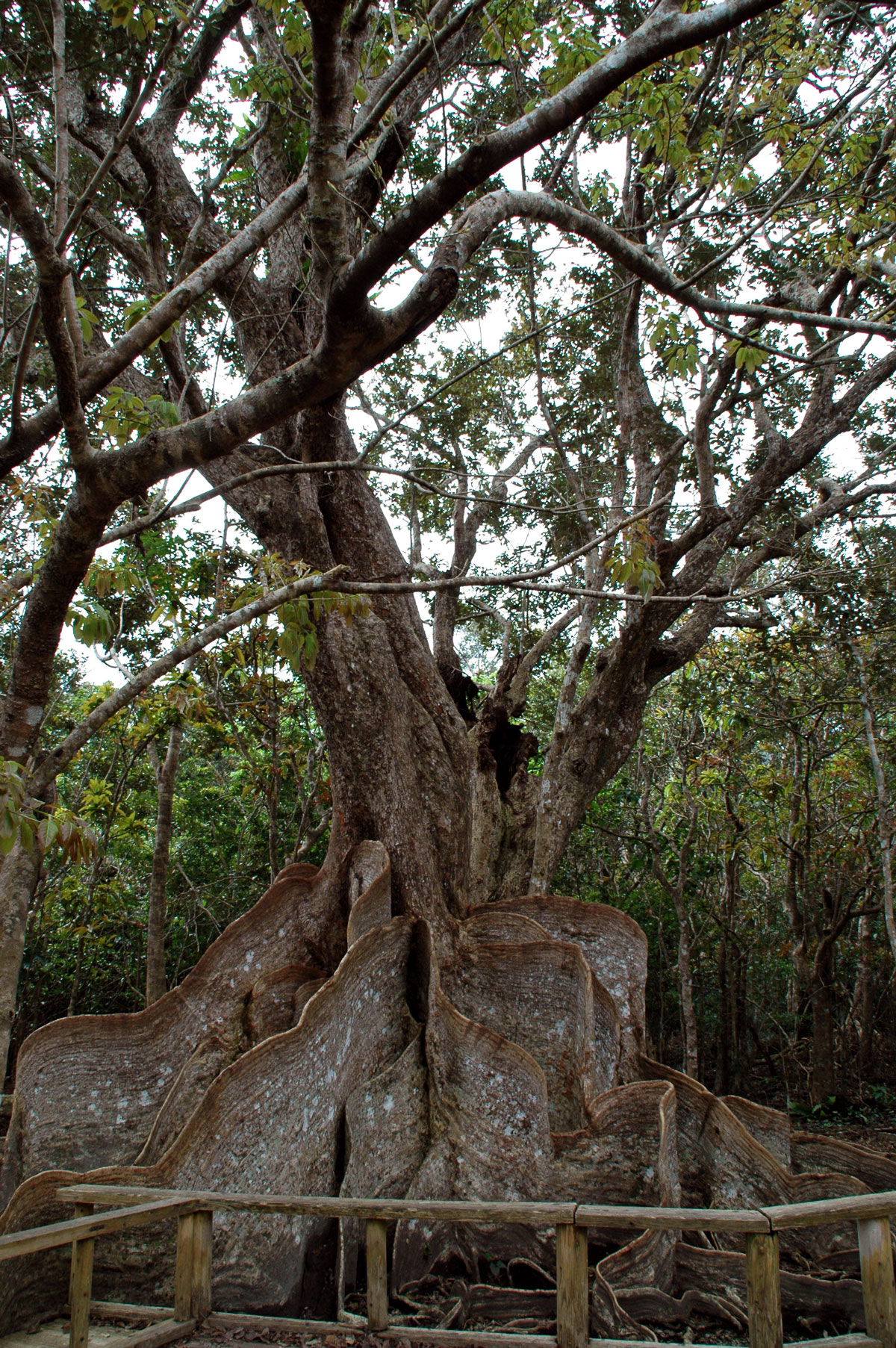 The property contains natural habitats of outstanding importance for in-situ conservation of the unique and diverse biodiversity of the central and southern part of the archipelago in which the property is located. The five component parts constituting the property are located in one of the 200 ecoregions considered most crucial to the conservation of global biodiversity. The subtropical rainforests of the property are the largest remaining in the region and harbour a very rich flora and fauna, boasting at least 1,819 vascular plants, 21 terrestrial mammals, 394 birds, 267 inland water fish, 36 terrestrial reptiles and 21 amphibians. These include approximately 57% of the terrestrial vertebrates of the biodiversity hotspot of Japan, including 44% of species endemic to Japan as well as 36% of Japan’s globally threatened vertebrates.
Among species listed on IUCN Red List of Threatened Species are the Amami Rabbit, only found on AmamiOshima and Tokunoshima Islands and the only species in its genus, with no close relatives anywhere in the world, and the flightless Okinawa Rail, endemic to the Northern part of Okinawa Island. Spiny rats form an endemic genus consisting of three species endemic to each of the respective three islands, and the Iriomote Cat, which only inhabits Iriomote Island.
Speciation and endemism are high for many taxa. For example, 188 species of vascular plants and 1,607 insect species are endemic within the four islands of the property. Rates of endemism among terrestrial mammals (62%), terrestrial reptiles (64%), amphibians (86%), and inland water crabs (100%) are also high. Twenty species are identified as Evolutionarily Distinct and Globally Endangered (EDGE) species, including the Okinawa Spiny Rat, Ryukyu Black-Breasted Leaf Turtle, and Kuroiwa’s Ground Gecko.
The property contains natural habitats of outstanding importance for in-situ conservation of the unique and diverse biodiversity of the central and southern part of the archipelago in which the property is located. The five component parts constituting the property are located in one of the 200 ecoregions considered most crucial to the conservation of global biodiversity. The subtropical rainforests of the property are the largest remaining in the region and harbour a very rich flora and fauna, boasting at least 1,819 vascular plants, 21 terrestrial mammals, 394 birds, 267 inland water fish, 36 terrestrial reptiles and 21 amphibians. These include approximately 57% of the terrestrial vertebrates of the biodiversity hotspot of Japan, including 44% of species endemic to Japan as well as 36% of Japan’s globally threatened vertebrates.
Among species listed on IUCN Red List of Threatened Species are the Amami Rabbit, only found on AmamiOshima and Tokunoshima Islands and the only species in its genus, with no close relatives anywhere in the world, and the flightless Okinawa Rail, endemic to the Northern part of Okinawa Island. Spiny rats form an endemic genus consisting of three species endemic to each of the respective three islands, and the Iriomote Cat, which only inhabits Iriomote Island.
Speciation and endemism are high for many taxa. For example, 188 species of vascular plants and 1,607 insect species are endemic within the four islands of the property. Rates of endemism among terrestrial mammals (62%), terrestrial reptiles (64%), amphibians (86%), and inland water crabs (100%) are also high. Twenty species are identified as Evolutionarily Distinct and Globally Endangered (EDGE) species, including the Okinawa Spiny Rat, Ryukyu Black-Breasted Leaf Turtle, and Kuroiwa’s Ground Gecko.
